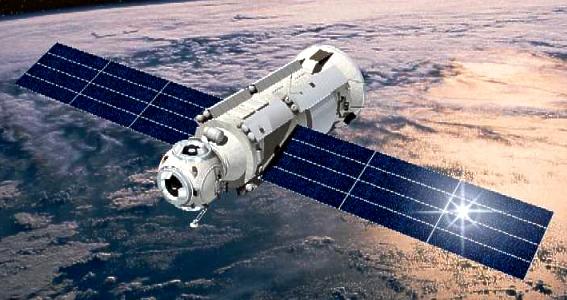The incident is seen as an important milestone marking a new era of cooperation in space technology between the two great powers, Russia and the United States, after decades of confrontation.
November 20, 1998 – The first Zarya module on the International Space Station flies into space
With the name Zarya – which means Dawn in Russian, it is a functional type of Functional Cargo Block. It was built by Russia at the expense of the United States, emphasizing the scientific importance of the ISS International Space Station. On November 20, 1998, Zarya entered a huge space outside of Earth with the help of Russian-made Proton-K boosters from the Baikonur Cosmodrome, Kazakhstan.
The incident is seen as an important milestone marking a new era of cooperation in space technology between the two great powers, Russia and the United States, after decades of confrontation. After being in orbit for a few weeks until December 7, 1998, Zarya was linked to the Unity module by the space shuttle Endeavor. The Unity module was launched into orbit by the Endeavor on December 4. The module was manufactured by the Federal Space Research and Production Center Khrunichev in Moscow under a contract with Boeing.
Zarya’s main task is to adjust the direction of the station, ensure communication with the ground as well as supply power to the Unity module before these functions are transferred to the Zvezda logistics module, which is intended to be stationed. orbit 6 months later. However, due to a delay, it was only two years after the launch of this third module of the ISS station. Zvezda is a service module providing the first living conditions to prepare the ground for the first crew members to live on the station. Currently, Zarya’s main function is to store goods as well as a corridor connecting Russian rooms on the ISS.

Zarya is 12.6m long, its widest width is 4.1m, and weighs 19,323 kg. Its expected lifespan is 15 years, but it may be a long time before Zarya is still functioning properly. This module receives energy from 2 solar panels measuring 10.7 mx 3.4 m. Each plate is covered with a sheet of glass coated with a photoelectric converter. These solar panels are inflated after the module is put into orbit, about 90% of the energy is absorbed from the surface side towards the Sun, the remaining 10% is on the other surface obtained from the light. Sunlight is reflected off the Earth. Power is routed to the power system’s six nickel-cadmium electrical reserves and the system can provide an average output of approximately 3 kW of electricity.
In the first phase of the ISS project, this system was used to power two Zarya and Unity modules. Later, when the Zvezda module was added, the entire system was transferred to Zarya for single use, while the task of powering was undertaken by Zvezda. In addition, Zarya’s 16 external fuel tanks can hold up to 5.4 tonnes of fuel. The module’s directional adjustment system includes 24 large steering jets and 12 small thrust nozzles, two large motors that can be used to increase the height of the station as well as change the trajectory before Zvezda is assembled in the station. . Its docking ports could allow assembly with the Soyuz transporter as well as with the Progress drone. Mod has been modified so that it can be refueled by the Progress transport whenever it is docked in the mod bottom mount port.


